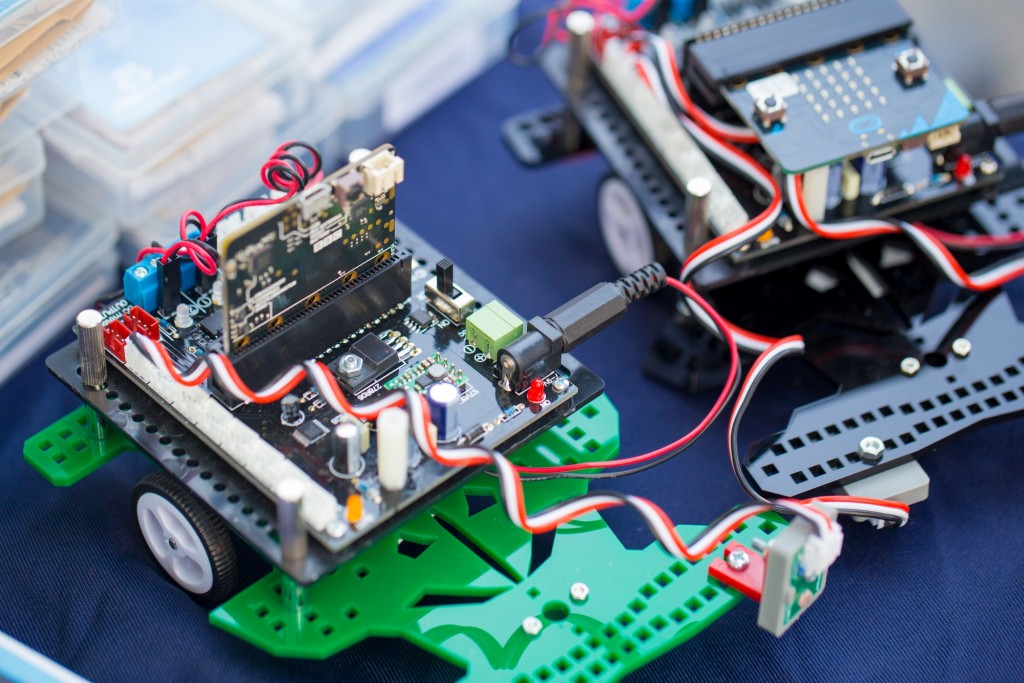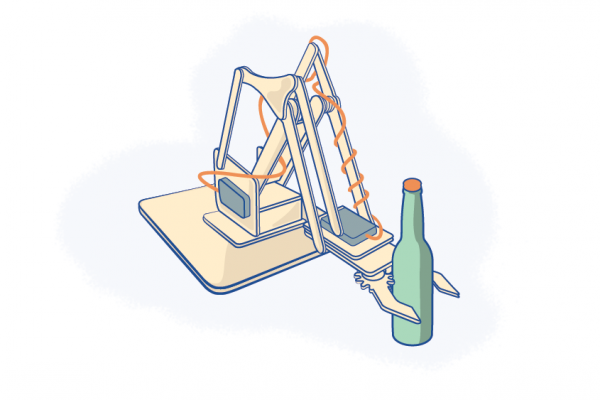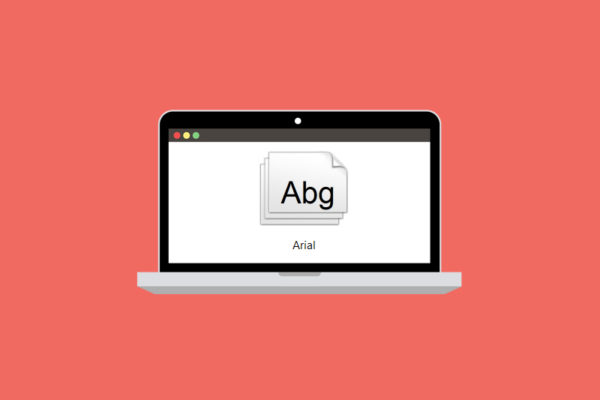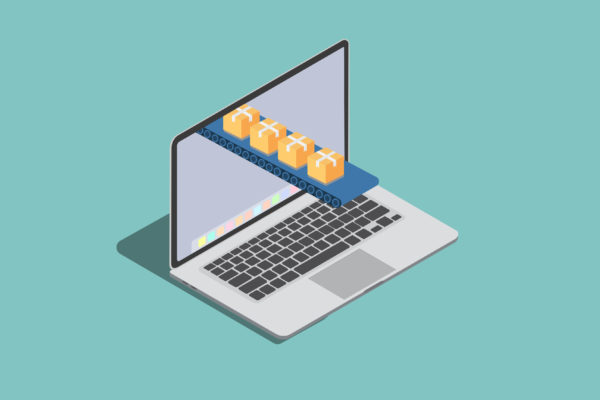
Prototyping Hardware Electronics Products
The cost of a prototype can be broken into two major parts: the engineering cost to design it, and the actual cost to produce it.
The total cost of the prototype (assuming an electronic product) usually includes the cost to manufacture the custom Printed Circuit Board (PCB), plus the cost of components, assembly, and the enclosure.
For most products the engineering costs will dominate. They also can vary greatly depending on several variables but especially on the product complexity.
Engineering fees may be only a few thousand dollars for a simple product up to hundreds of thousands of dollars for a really complex product.
Ultimately, the best way to reduce your prototyping cost (in fact, all of your costs) is to simplify your product as much as possible as early as possible.
Many times a seemingly “simple” feature can dramatically increase the development complexity and cost.
Even something as simple as the location of a button can cost you thousands of dollars extra down the road when it is time to purchase injection molds to mass manufacture the enclosure.
Don’t forget all of the steps that lie beyond the initial prototype on the path to market. This includes costs like electrical certifications and injection molds.
Reducing product complexity drastically reduces all of these costs making it more feasible to bring the product to market on a restricted budget.
As another example a member in my Hardware Academy recently shared his product details to get feedback from myself and the other experts. This entrepreneur was quite technical and had thought a lot about the product details.
But, he didn’t understand all the future consequences of the features he had specified.
Immediately we explained to him there was one product feature that was driving up all of his costs including his development, prototyping, electrical certifications, and injection mold costs.
You know what? This feature wasn’t even essential and we were able to suggest a much more feasible solution. This small change likely lowered his prototype cost by about 3 times!
Keep in mind that asking your primary developer to help simplify your product creates a conflict of interest. The more complex the product the more money they get paid.
This is why I recommend working with experts independent of your primary developers to help simplify your product before you begin full development.
Engineering Costs
Most engineers work on an hourly basis especially on larger projects.
Be warned though that it’s impossible to quote the development cost and time for a complex product exactly down to the hour. So you should expect your costs to exceed what is initially estimated.
The hourly rate charged by design engineers varies depending on location, years of experience, education level, area of specialty, success with previous projects, etc.
According to the Institute of Electrical and Electronic Engineers (IEEE) the average rate for an independent contract engineer is $125/hr. in the United States.
Roughly, hourly rates for an engineer in the U.S. can vary from $50-$300/hr. This is a big variance but once again it all depends on the experience level of the engineer.
For example, a more expensive engineer may be able to work twice as fast and produce a higher quality of work, both of which will lower your overall cost.
You can hire engineers outside of the U.S. typically much cheaper with hourly rates varying from $25 to $75 per hour.
Regardless of their location or experience level you should always have other independent engineers review their work along the way. This is especially critical if you don’t have the experience to judge their quality of work.
For most products you will need at least an electronics engineer, a programmer, and a mechanical engineer.
Electronics Prototypes
The cost you will pay for prototypes of your Printed Circuit Board (PCB) will depend on many variables. The most critical one likely being where you have the boards produced.
If you choose to have your boards produced in China then you will pay only a couple hundred dollars for a few boards, but that will increase to likely over $1,000 if the boards are produced in the U.S.
For producing your prototype boards in China I highly recommend PCBWay, Bittele Electronics, or Seeed Studio. For production in the United States I primarily recommend Sunstone Circuits.
Most boards require 4 layers. Adding more layers can help reduce the board size but at a higher board cost.
Although the board cost increases as the board size increases, the number of layers has a much greater impact on cost. So bigger boards with few layers are cheaper than smaller boards with more layers.
Advanced PCB technologies, like blind and buried vias, can also be used to decrease board size even further. But these technologies will add thousands to your prototyping costs so only use them if absolutely necessary.
In most cases, only wearable devices can justify the added cost of blind and buried vias to reduce your board size.
In addition to the board production and assembly costs, there is the cost for the electronic components.
But for most products the cost of the components is minimal and usually totals less than about hundred dollars for a few boards.
Enclosure Prototypes
As for the enclosure (i.e. the case) the cost depends if you want a custom design or if you can get by with a stock enclosure.
A stock enclosure will usually only cost a few dollars. A custom enclosure prototype will cost several hundred dollars depending on the size, complexity and number of pieces needed.
For prototyping simple plastic or metal boxes you could use Ponoko Laser cutting. For more complex custom plastic or metal parts I highly recommend Proto Labs based in the U.S. They offer various prototyping services as well as creating low volume injection molds that allow you to produce a few thousand parts.
A lower cost option in China is again Seeed Studio which offers both 3D printed and CNC machined prototypes.
Try to get by with a stock enclosure as long as possible to save money and complication. However, most products eventually require a custom designed case so you can’t delay that complication indefinitely.
Conclusion
Keep in mind that all of these costs will reduce significantly as your production volume increases. The cost of a prototype is not to be confused with the manufacturing cost for the product.
Even going from 2 units to 20 units will have a huge impact on the unit price.
What costs you a thousand dollars for a single prototype may only cost a couple of dollars once you purchase much higher volumes.
The most important thing to remember is you need to spend significant effort simplifying your product to make it more feasible to prototype and ultimately bring to market.
Be sure to download your Ultimate Guide: How to Develop and Sell Your New Electronic Hardware Product.
This article was written by John Teel who is the founder of Predictable Designs, a company which helps guide entrepreneurs bringing new electronic products to market. John was formerly a microchip design engineer for Texas Instruments where he created electronic designs now used in millions of products. He is also a successful entrepreneur who developed his own hardware product that sold in hundreds of retail locations.


